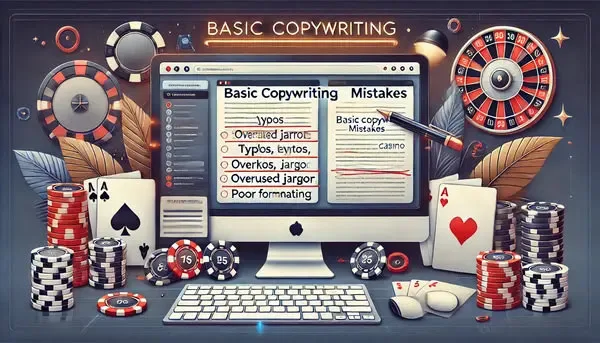
Inclusive and Ethical Language in Copywriting: How to Write So Everyone Feels “Part of It”
In 2025, the role of inclusive and ethical language in copywriting has become more critical than ever. As society continues to recognise the importance of representation, respect, and equity, brands and content creators are expected to communicate in a way that ensures no one feels excluded. This is not only a matter of political correctness but also a fundamental aspect of building trust, credibility, and genuine connection with audiences worldwide. Crafting inclusive messages requires an understanding of cultural nuances, sensitivity to personal identity, and the application of modern communication ethics.
Understanding the Foundations of Inclusive Copywriting
Inclusive copywriting goes beyond simply avoiding offensive words. It aims to create content that resonates with diverse audiences while reflecting respect for different backgrounds, experiences, and identities. At its core, it involves the conscious choice of words and tone that ensure all readers feel recognised and valued.
Language plays a powerful role in shaping perceptions. Even subtle choices in vocabulary can influence how people perceive themselves and others. Writers must be aware of potential biases, stereotypes, and implicit assumptions embedded in their language. This awareness allows for the creation of messages that truly connect with a broad and varied audience.
Modern inclusive writing also incorporates accessibility principles. This includes using clear, simple language where appropriate, avoiding jargon, and ensuring content can be understood by individuals with different levels of literacy or those using assistive technologies. Inclusivity in copywriting means thinking about every reader’s ability to engage with the message fully.
Why Ethical Language Matters for Brand Trust
Trust is the foundation of any successful brand relationship, and language is a primary driver of that trust. Ethical language demonstrates integrity and shows that a brand values honesty and transparency. This fosters a positive reputation and encourages loyalty from diverse customer groups.
When brands use inclusive and ethical language, they send a clear message: “We see you, we respect you, and we care about your experiences.” This approach is essential in avoiding alienation and ensuring people feel comfortable engaging with the content. In contrast, careless or biased wording can create long-lasting damage to brand perception.
Ethical language also aligns with modern corporate responsibility standards. In 2025, consumers are increasingly holding brands accountable for their communication practices. Companies that integrate inclusivity into their copywriting are seen as forward-thinking and socially responsible, which strengthens their competitive advantage.
Practical Strategies for Writing Inclusively
Inclusive writing starts with research. Understanding the cultural and social backgrounds of your audience is essential to ensure that your words are both relatable and respectful. This means learning about different communities, their preferred terminology, and the historical context behind certain phrases.
Gender-neutral language is one of the most prominent aspects of inclusivity. Avoiding unnecessary gendered terms and opting for neutral alternatives ensures that all individuals feel represented. Similarly, when discussing race, ethnicity, disability, or other personal identifiers, writers should use accurate, person-first language that prioritises respect over stereotypes.
Another practical step is reviewing and revising content with diversity in mind. Many brands now involve sensitivity readers or diversity consultants to assess content before publication. This proactive approach helps identify problematic language that may otherwise go unnoticed, preventing unintentional harm.
Balancing Creativity and Responsibility
Copywriting thrives on creativity, but inclusivity requires that this creativity is balanced with responsibility. Striking the right tone involves crafting engaging content that avoids humour or metaphors that could marginalise or stereotype individuals or groups. Being aware of cultural differences in humour, symbolism, and idioms is key.
Responsible creativity also means challenging outdated norms. For example, replacing traditional “default” perspectives with more diverse narratives can make content richer and more relatable. It’s about expanding the creative toolkit while ensuring that innovation does not come at the expense of inclusivity.
In practice, this might mean reimagining product descriptions, slogans, or campaigns to be more reflective of a diverse customer base. By doing so, brands can create marketing that not only sells but also unites people under shared values.

Maintaining Ethical Standards Across All Channels
Consistency is essential when it comes to inclusive and ethical language. A brand’s commitment to respectful communication should be evident across every channel – from advertising and social media to customer service and internal documents. This creates a unified voice that reinforces the brand’s values.
In 2025, audiences expect brands to practise what they preach. This means ensuring that inclusivity is not just a marketing strategy but a deeply embedded organisational principle. Training staff, developing style guides, and regularly updating them in line with evolving language trends are vital steps in this process.
Monitoring feedback is another important factor. Language norms evolve quickly, and what is considered inclusive today may change tomorrow. Brands should remain adaptable, open to criticism, and willing to update their messaging in response to community input.
Future Outlook: The Role of Inclusivity in Copywriting
The future of copywriting will be shaped by inclusivity and ethical responsibility. As technology enables more personalised communication, brands will have greater opportunities to connect meaningfully with individuals across diverse backgrounds. However, this also increases the responsibility to ensure these connections are respectful and authentic.
Artificial intelligence and automation are becoming more prevalent in content creation, making it even more important to integrate ethical standards into these processes. Tools should be designed to recognise and eliminate biased language while supporting creativity and clarity.
Ultimately, inclusive and ethical copywriting is not just a passing trend – it is a core component of effective communication. In a world where audiences value respect, authenticity, and diversity, mastering this approach is essential for any brand that wishes to remain relevant and trusted.




